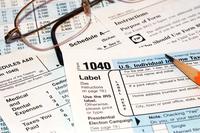Choose Your Correct Filing Status
Your federal tax filing status is based on your marital and family situation. It is an important factor in determining whether you must file a return, your standard deduction and your correct amount of tax.
Your marital status on the last day of the year determines your status for the entire year. If more than one filing status applies to you, you may choose the one that gives you the lowest tax obligation.
There are five filing status options:
- Single. Generally, if you are unmarried, divorced or legally separated according to your state law, your filing status is Single.
- Married Filing Jointly. If you are married, you and your spouse may file a joint return. If your spouse died during the year and you did not remarry, you may still file a joint return with that spouse for the year of death.
- Married Filing Separately. Married taxpayers may elect to file separate returns.
- Head of Household. You must be unmarried and paid more than half the cost of maintaining a home for you and a qualifying person.
- Qualifying Widow(er) with Dependent Child. If your spouse died during 2003 or 2004, you have a qualifying child and meet certain other conditions; you may be able to choose this filing status.
For more information about filing status see publication 501, Exemptions, Standard Deduction, and Filing Information available on the IRS website at IRS.gov or by calling 1-800-TAXFORM (1-800-829-3676).
Should You File a Tax Return?
You must file a tax return if your income is above a certain level. The amount varies depending on filing status, age and the type of income you receive.
For example a married couple, under age 65, generally is not required to file until their joint income reaches $16,400. However self-employed individuals generally must file a tax return if their net income from self employment exceeds $400.
Check the "individuals" section of the IRS Web site at IRS.gov or consult the instructions for form 1040, 1040A or 1040EZ for specific details that may affect your need to file a tax return with IRS this year.
Even if you do not have to file, you should file to get money back if Federal Income Tax was withheld from your pay, or you qualify for any of these credits:
- Earned Income Tax Credit. The Earned Income Tax Credit is a federal income tax credit for eligible low-income workers. The credit reduces the amount of tax an individual owes, and may be returned in the form of a refund.
- Additional Child Tax Credit. This credit may be available to you if you have three or more qualifying children or if you have earned income that exceeds $10,750. The Additional Child Tax Credit may give you a refund even if you do not owe any tax.
- Health Coverage Tax Credit. Limited to certain individuals who are receiving certain Trade Adjustment Assistance, Alternative Trade Adjustment Assistance, or pension benefit payments from the Pension Benefit Guaranty Corporation.
For more information about filing requirements and your eligibility to receive tax credits visit the IRS Web site at IRS.gov.
Seven Ways to Get a Jump Start on Your Taxes
Earlier is better when it comes to working on your taxes. Taxpayers are encouraged to get a head start on tax preparation, especially since early filers avoid the last minute rush and get their refunds sooner.
Here are seven easy ways to get a good jump on your taxes long before the April deadline is here:
- Gather your records in advance. Make sure you have all the records you need, including W-2s and 1099s. Don't forget to save a copy for your files.
- Get the right forms. They're available around the clock on the IRS Web site, IRS.gov.
- Take your time. Don't forget to leave room for a coffee break when filling out your tax return as rushing can mean making a mistake.
- Double-check your math and verify all Social Security numbers. These are among the most common errors found on tax returns. Taking care will reduce your chance of hearing from the IRS and speed up your refund.
- Get the fastest refund. When you file early, you receive your refund faster. When you choose direct deposit, you receive your refund sooner than waiting for a check
- E-filing is easy. E-filing catches math problems, provides confirmation your return has been received and gives you a faster refund.
- Don't panic. If you have a problem or a question, remember the IRS is there to help. Try the IRS Web site at IRS.gov or call the IRS customer service number at 1-800-829-1040.








